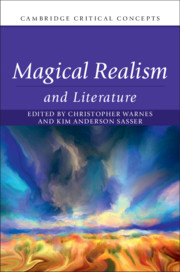Book contents
- Magical Realism and Literature
- Cambridge Critical Concepts
- Magical Realism and Literature
- Copyright page
- Contents
- Contributors
- Introduction
- Part I Origins
- Part II Development
- Chapter 6 Magical Realism and the ‘Boom’ of the Latin American Novel
- Chapter 7 Magical Realism
- Chapter 8 Beautiful Lies
- Chapter 9 Myth, Orality and the African Novel
- Chapter 10 Breaking Boundaries
- Chapter 11 East Asian Magical Realism
- Chapter 12 Magic and Realism in South Asia
- Chapter 13 Fantastic Cohabitations
- Part III Application
- Bibliography
- Index
Chapter 7 - Magical Realism
The European Trajectory
from Part II - Development
Published online by Cambridge University Press: 22 October 2020
- Magical Realism and Literature
- Cambridge Critical Concepts
- Magical Realism and Literature
- Copyright page
- Contents
- Contributors
- Introduction
- Part I Origins
- Part II Development
- Chapter 6 Magical Realism and the ‘Boom’ of the Latin American Novel
- Chapter 7 Magical Realism
- Chapter 8 Beautiful Lies
- Chapter 9 Myth, Orality and the African Novel
- Chapter 10 Breaking Boundaries
- Chapter 11 East Asian Magical Realism
- Chapter 12 Magic and Realism in South Asia
- Chapter 13 Fantastic Cohabitations
- Part III Application
- Bibliography
- Index
Summary
In contemporary parlance, magical realism is most often considered to be a phenomenon of Latin American origin that as of the 1960s spread to the rest of the world, and primarily to postcolonial or emerging literatures. It should be remembered, though, that between the two World Wars in Europe there arose something we might call magic realism, to distinguish it from later magical realism. The roots of this European movement are to found in German and Italian literature, with a later development in Flemish literature. Names to mention are Ernst Jünger, Massimo Bontempelli and Hubert Lampo. Later authors to have been linked to the mode, though now usually retrospectively with reference to the magical variant, are Günther Grass, Milan Kundera, Angela Carter, José Saramago and Carlos Ruiz Zafón.
Keywords
- Type
- Chapter
- Information
- Magical Realism and Literature , pp. 117 - 130Publisher: Cambridge University PressPrint publication year: 2020



